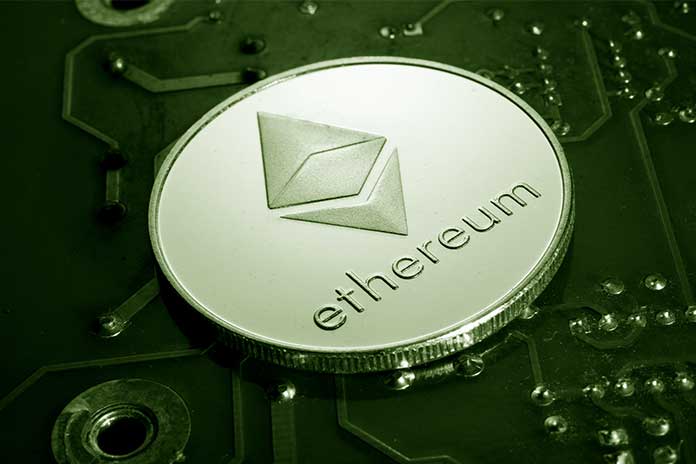Ethereum is often mentioned alongside Bitcoin as a technological breakthrough that’s going to move the industry forward. If up until now you focused solely on Bitcoin, this is the perfect opportunity to learn what Ethereum is and what the project tries to accomplish as it continues to evolve.
Ethereum as a Platform
Ethereum has some similarities with Bitcoin. Ether (ETH), the platform’s token, can be used as currency, and users can find all transactions made with it on the blockchain’s public ledger. However, that’s where the similarities practically end.
Ethereum is a platform that enables users to build their own decentralized systems: applications (dapps), financial systems (DeFi), autonomous organizations, non-fungible tokens (NFTs), and more.
“Decentralized” is the keyword here, and the Ethereum project is building such a platform to create a highly-secured censorship-resistant environment. Furthermore, the entire community influences the project, and no one is excluded from participating in its public and transparent network.
Decentralized Applications
Ethereum offers attractive possibilities to app developers. It provides a network of computers with no downtime for your code to operate. Privacy and censorship you’d experience on most centralized app marketplaces aren’t an issue on Ethereum’s platform since no one can stop you from deploying your code online or reading information stored on the blockchain.
Decentralized Finance
Ethereum creates financial systems that allow users to trade, invest, save, and borrow on marketplaces built using Ethereum’s technology. The project seeks to make global markets more accessible while providing alternatives to traditional banking systems.
DeFi provides an open environment with constantly available markets, fast money transfers, transparency, and complete control over your funds.
Such platforms are more than simple exchanges. Some features of DeFi are borrowing with and without collateral, lending, creating savings accounts, funding your business, getting insurance, even using stable cryptocurrencies that have backing in US dollars, gold, or other assets.
Non-Fungible Tokens
While some consider NFTs just a fad, they have found their audience among the new generation of collectors. With this technology, any asset can be tokenized, including digital art, real estate deeds, or any other kind of file – video, audio, and images.
Non-fungible basically means unique, irreplaceable, one of a kind. Therefore no two NFTs are the same. The crucial technological aspect of NFTs is that they provide public digital records of ownership that anyone can easily verify.
As humanity shifts to ownership of digital assets, Ethereum provides a platform for it. Indeed, many artists have taken advantage of having a decentralized platform to distribute their works as NFTs.
Ethereum’s Smart Contracts
The main feature of Ethereum that makes it different from Bitcoin-like cryptocurrencies is the possibility to create smart contracts. These are the cornerstones of decentralized apps, decentralized finance, and other projects on Ethereum.
Simply put, smart contracts are self-running programs that can act as an impartial intermediary in seller-buyer relationships and much more. The only limit is the ability and the imagination of the programmer behind the code of a smart contract.
Furthermore, Ethereum allows users to create their tokens attached to smart contracts, and many successful and popular cryptocurrency projects use Ethereum as their foundation.
What Is Ethereum 2.0?
Ethereum is a growing project with a determined development roadmap. Eth2 is another stepping stone for Ethereum aimed at creating a more environmentally friendly and scalable solution as the platform moves away from traditional methods of verifying cryptocurrency transactions.
Proof of Work vs. Proof of Stake
You’ve probably heard that Bitcoin and other cryptocurrencies are “mined.” The process referred to as mining ensures that the network is secured and transactions are verified and processed.
Proof of work requires significant computing power and, therefore, the sheer amount of electricity malicious actors would need to carry out their attacks functions as a safety barrier. To manipulate Bitcoin, they would need to control more than half of Bitcoin’s infrastructure, and that’s impossible due to the network’s current size.
However, high energy consumption is bad for the environment. That’s the reason Ethereum, since its inception, was intended to switch to proof of stake, a more eco-friendly way of securing its network. Miners in this scenario need to stake their Ether to participate as validators. Should they try to manipulate the blockchain in any malicious manner, they would lose their staked Ether.
Proof of stake will have Ethereum’s power consumption drop by 99.5% as the process shifts from power-intensive to the stake-based system.
Shard Chains
Another important upgrade will tackle one of the most commonly cited issues with cryptocurrencies – scalability. Traditional payment systems are capable of processing more than 1,000 transactions per second. Visa, for example, claims that it can process 1,700 – that’s 150 million transactions each day.
Cryptocurrencies are currently far behind that volume of transactions, which makes them poor candidates for universally accepted means of payment. Ethereum updates aim to overcome this obstacle by raising the number of supported transactions to at least 1,000 per second through sharding – distributing the network’s load across 64 new chains.
Not Just Another Crypto
Ethereum is an ambitious project with uses and applications that far exceed those of a “regular” cryptocurrency. It has the potential to revolutionize the ways we trade, manage our finances, verify our contracts, ascertain ownership, and even how we collect art. Whether it’ll realize this potential depends primarily on its ability to transform to become more scalable and sustainable, but also on a number of external factors. One thing is certain – the future of the project will be anything but dull.


